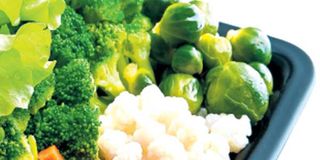Hold onto those nuts, they are good for you

A wiser strategy would have been to reduce oxalates, a metabolic end-product found in beetroot, chocolate, rhubarb, spinach, tea, carob and nuts, especially peanuts. This would have reduced the chances of stones forming in her kidneys. PHOTO | FILE
What you need to know:
- Lentils, beans, and peas make an excellent alternative protein source. Potassium-rich foods such as bananas and tomatoes can also reduce the likelihood of calcium crystallisation, since they help to flush out excess salt and water.
- Remember to stagger water consumption throughout the day to allow your kidneys to hold on to it better. Perhaps most importantly, drinking water throughout the day can help people with really tiny stone particles to pass them with no pain at all.
For 10 years Naomi suffered from kidney stones. She didn’t fit the typical profile of a kidney stone sufferer, one who generally eats rich food but does not take enough fluids.
Before I jump into the cause of Naomi’s problem, let me explain what kidney stones are. As you’d expect, the story begins in the kidneys, whose job it is to dispose of the body’s waste products.
Sometimes, tiny particles don’t dissolve in the urine, and instead clump together to form hard, solid lumps. The stones vary in size, from no larger than a poppy seed to as big as a walnut.
Most of them are made up of a substance called calcium oxalate. This means that the more calcium and oxalate particles you have in the urine, the more likely you are to develop a stone.
This is why Naomi was told to cut down on calcium-rich foods. Unfortunately, that made her condition worse. By cutting down her intake of these foods (dairy products, green, leafy vegetables, soft-boned fish), her body produced more calcitriol, a steroid hormone that increases the amount of calcium the body hangs on to.
This hormone also leads to a higher excretion of calcium in the urine – exactly the opposite of what her doctor wanted to achieve.
A wiser strategy would have been to reduce oxalates, a metabolic end-product found in beetroot, chocolate, rhubarb, spinach, tea, carob and nuts, especially peanuts. This would have reduced the chances of stones forming in her kidneys.
Naomi was also asked to reduce her overall intake of animal protein, which includes red meat, fish, chicken and eggs. Animal protein makes the urine more acidic, thus increasing the risks of the calcium oxalate crystallising.
RESOLVING IMBALANCES
Lentils, beans, and peas make an excellent alternative protein source. Potassium-rich foods such as bananas and tomatoes can also reduce the likelihood of calcium crystallisation, since they help to flush out excess salt and water.
She was also told to drinks lots of water – 2.5 litres a day. A dehydrated body is far more likely to start forming stones (an additional glass will be required for every tea, coffee, cola or alcoholic drink you take).
Remember to stagger water consumption throughout the day to allow your kidneys to hold on to it better. Perhaps most importantly, drinking water throughout the day can help people with really tiny stone particles to pass them with no pain at all.
Naomi took all these steps but still kept getting kidney stones, which demanded a couple of surgeries. In was only 10 years later that doctors realised that something else was wrong.
The high levels of calcium in Naomi’s urine had to do with a problem in her parathyroid glands. Located in the neck, parathyroid glands are responsible for the balance of calcium in the blood and in the bones.
Once the imbalance was resolved, so was Naomi’s problem. As I often point out in this column, getting to the root of a problem is more effective than dealing with the symptoms.
So why had Naomi come to see me? The long-term suffering her kidneys had gone through had left her with high blood pressure, something she didn’t want to take medication for. Correcting her body’s mineral balance helped to do this.
We boosted her potassium and magnesium intake (eating more seeds, nuts, beans, bananas and green vegetables), reduced sodium (less salt) and calcium in the diet (limit dairy).




